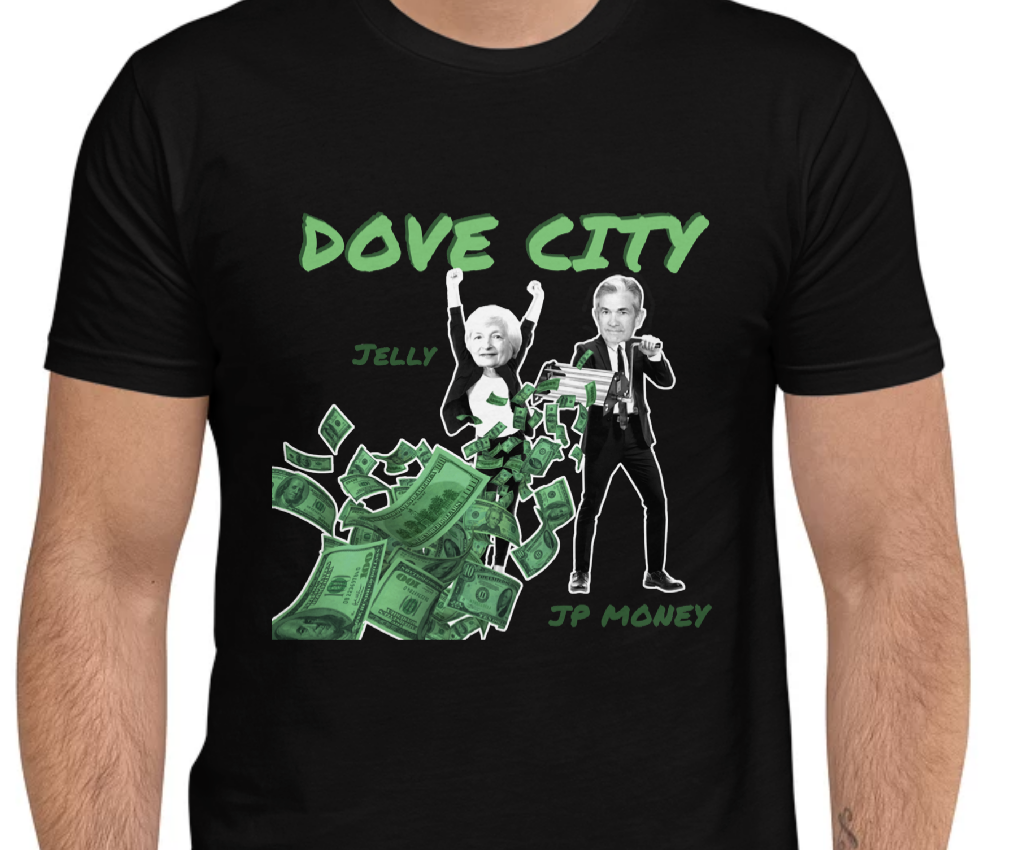| | | | | | | Presented By Goldman Sachs | | | | Axios Markets | | By Dion Rabouin ·Dec 04, 2020 | | Good morning! Was this email forwarded to you? Sign up here. (Today's Smart Brevity count: 1,247 words, 4.7 minutes.) 🖨 Situational awareness: The November U.S. nonfarm payrolls report out today is expected to show headline jobs growth of 450,000, down from October's 638,000. 🎙 "Never dull your shine for somebody else." — See who said it and why it matters at the bottom. | | | | | | 1 big thing: A fragile recovery |  Data: Department of Labor; Chart: Axios Visuals The number of people receiving unemployment benefits is falling but remains remarkably high three weeks before pandemic assistance programs are set to expire. More than 1 million people a week are still filing for initial jobless claims, including nearly 300,000 applying for pandemic assistance. By the numbers: As of Nov. 14, 20.2 million Americans were receiving unemployment benefits of some kind, including more than 13.4 million on the Pandemic Unemployment Assistance (PUA) and Pandemic Emergency Unemployment Compensation (PEUC) programs that were created as part of the CARES Act and end on Dec. 26. - The 4.6 million people receiving benefits through PEUC have been unemployed for at least six months and economists estimate that only about 2.9 million will be eligible for the extended benefits program.
- The rest and any potential new applicants will be out of luck unless Congress extends the programs.
Between the lines: The Department of Labor released the latest figures under the specter of a report from the Government Accountability Office that found its weekly releases "do not provide an accurate estimate of the total number of individuals actually claiming unemployment insurance." - GAO found that the DOL had "potentially both over-estimated and underestimated the total number of individuals actually claiming unemployment insurance."
- That means not only are the numbers misleading but many who qualify for and should be receiving benefits still have not gotten them, even as the pandemic programs are set to end.
No cap: DOL agreed with the GAO findings, the office noted. A closer look: Former DOL chief economist Heidi Shierholz estimates that as of late October, there were 25.7 million workers unemployed or otherwise out of work or who have lost wages. - 11.1 million were officially unemployed in the October jobs report.
- 7 million have seen pay cuts.
- 4.5 million have dropped out of the labor force.
- 3.1 million have been miscalculated as employed.
The last word: "Good data is essential for policymaking in a crisis and we did not have that this time around, which is unacceptable," Shierholz, now director of policy at the Economic Policy Institute, tells Axios in an email. - "[K]nowing exactly what happened so that we can make the investments to ensure this will never happen again is crucial."
|     | | | | | | 2. Catch up quick | | New U.S. coronavirus cases topped 200,00 and the U.S. set a new fatality record of 2,804 deaths earlier this week. (WSJ) OPEC and major allies, including Russia, agreed to ease production restrictions by 500,000 barrels of oil per day in January. (FT) |     | | | | | | 3. Dr. Copper has good news |  Data: FactSet; Chart: Axios Visuals Copper prices rose to the highest since March 2013 on Thursday, spurred by substantial increases in orders from China and expectations it will be a major component in new green energy projects. Why it matters: Dr. Copper, as the metal is affectionately known, is a bellwether for the economy because it is used for wiring, piping and in most construction projects and household appliances. - Prices have risen by nearly 25% this year.
What they're saying: "This current price strength is not an irrational aberration, rather we view it as the first leg of a structural bull market in copper," Goldman Sachs analysts said in a research note Monday. - Goldman raised its 12-month forecast for copper to $9,500 per metric ton, up from a previous estimate of $7,500.
|     | | | | | | A message from Goldman Sachs | | How does Carlyle's Kewsong Lee approach investing risk? | | |  | | | | Kewsong Lee joins Goldman Sachs' Insights from Great Investors to discuss how the pandemic has reshaped his investment outlook and why he thinks the biggest risk as an investor is not taking any risk at all. Find out how he is thinking about risk in the new investing landscape. | | | | | | 4. Markets brace for inflation spike |  Data: ISM; Chart: Axios Visuals A spate of recent U.S. economic data releases suggest that inflation could be making a major comeback. Driving the news: Thursday's report on the U.S. services sector for November from the Institute for Supply Management was slightly better than expected but still down from October's reading, however, the bigger story was in the prices paid index. What happened: Prices paid jumped to its highest level since early 2012, rising for the second straight month and coming in above 60 for the third month in four and fourth month in six. - Prior to June, the prices paid index hadn't risen above 60 since November 2018.
- The increase in services prices has come in concert with increasing manufacturing prices. ISM's manufacturing prices paid index has been above 60 for each of the past three months (October through December) after not hitting 60 since December 2018.
- A reading above 50 indicates that prices are increasing.
Why it matters: A return of inflation would put the U.S. economy in a precarious position, especially with the renewed rise in COVID-19 diagnoses and the still weak job market. - The Fed is holding interest rates down to help spur economic activity but could be forced to choose between the need to rein in inflation and the need to assist the economy.
Yes, but: Some economists have been incredulous about rising inflation, given the deflationary impact of the coronavirus pandemic. - "Just a reminder that one off shifts in prices (goods vs services >> services vs goods) do not an inflation process make," MacroPolicy Perspectives president Julia Coronado wrote on Twitter.
- "Inflation is steady increases in a broad set of prices underpinned by steady gains in consumer purchasing power. Thank you for coming to my Ted talk..."
Yes, but, but: Closely followed inflation metrics are reacting just the same — 5-year, 10-year and 30-year breakeven inflation rates have climbed all week, hitting fresh highs every day since Tuesday that date back to May 2019. - The 5-year, 5-year forward inflation expectation rate rose to 1.94% Thursday, the highest its been since July 2019.
|     | | | | | | 5. San Francisco Fed chief says Fed must do better on inequality | | While the Fed chair has downplayed and even denied the central bank's role in ratcheting up income inequality and the K-shaped recovery, other Fed members are taking responsibility and calling for change. What happened: San Francisco Fed president Mary Daly took the subject head-on in a speech earlier this week, saying the Fed "will need to do more to ensure that the benefits of low interest rates and rising asset valuations can spread widely throughout the economy." "The COVID-19 response made it clear that our interest rate policies and lending programs do not reach everyone equally. Many businesses and households are outside of the traditional banking system and do not have the same opportunities to refinance or initiate loans." "We've heard repeatedly in the 12th District and across the country that these differences hampered the pandemic relief, slowing its delivery to many in need." "To solve these issues, and increase the reach of the financial infrastructure, we will need to think outside of the traditional banking box. This could mean developing firmer partnerships with Community Development Financial Institutions and other nonprofit or small dollar lenders." "These institutions are already connected to low- and moderate-income communities and are innovating to improve their reach among those most in need. It could also mean taking lessons from recent months and developing blueprints for lending relief programs that can be more equitably deployed next time they are needed." Of note: Daly isn't the first Fed member to acknowledge the Fed's role in inequality. The subject of what the Fed can do to reduce rather than increase inequality was broached in October at the Minneapolis Fed's "Racism and the economy" event. |     | | | | | | 6. Who wants Dove City T-shirts??? | | T-shirt design featuring Janet Yellen and Jerome Powell: Aïda Amer/Axios Our senior editorial designer Aïda Amer created this Dove City T-shirt, celebrating our coming era of free money forever, and Axios Markets readers can get their very own just in time for the holidays! What's happening: I am ordering one and am offering them to you, my loyal subscribers, as well. The shirt costs around $20, none of which goes to me or Axios. - If you want one, just write me an email (or hit reply) and let me know. I'll provide you with instructions on how to purchase.
Why it matters: This is the flyest shirt ever. Get yours and step into 2021 in style. Wait. Seriously? Yes. If you want the shirt, send me an email with Dove City in the subject line and I'll tell you how to buy one. In fact, you can buy as many as you want. |     | | | | | | A message from Goldman Sachs | | What's on the minds of some of the world's great investors? | | |  | | | | Each week, Goldman Sachs brings viewers an interview with leading private and public investors. Why it's important: Some of the world's greatest investors will provide insight on their investing philosophies and how they are approaching the new investing landscape. Explore their insights. | | | | Thanks for reading! Quote: "Never dull your shine for somebody else." Why it matters: On Dec. 4, 1973, television creator, actress and model Tyra Banks was born. - In addition to being a New York Times best-selling author and the creator of "America's Next Top Model," Banks was the first Black woman to be featured on the covers of GQ and the Sports Illustrated Swimsuit Issue and one of four African Americans and seven women to have repeatedly been ranked among the world's most influential people by Time magazine.
| | | | Axios thanks our partners for supporting our newsletters.
Sponsorship has no influence on editorial content. Axios, 3100 Clarendon Blvd, Suite 1300, Arlington VA 22201 | | | You received this email because you signed up for newsletters from Axios.
Change your preferences or unsubscribe here. | | | Was this email forwarded to you?
Sign up now to get Axios in your inbox. | | | | Follow Axios on social media:    | | | | | |








No comments:
Post a Comment